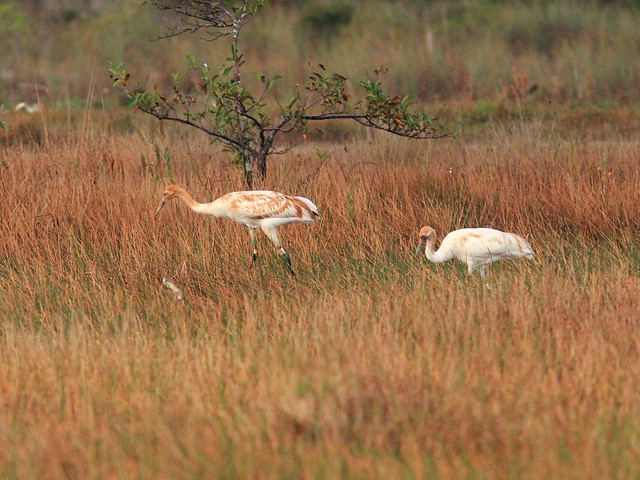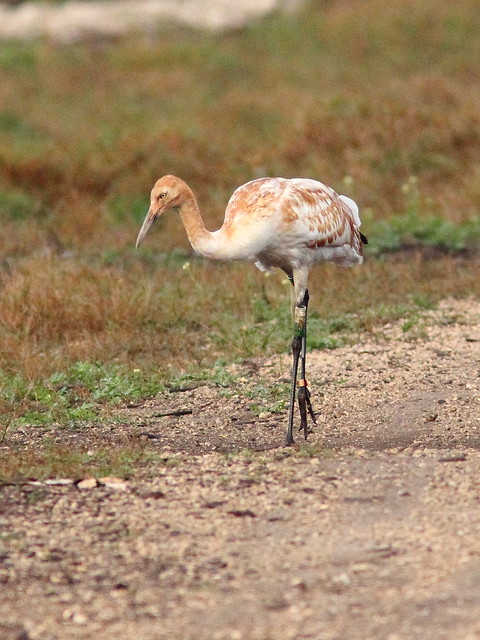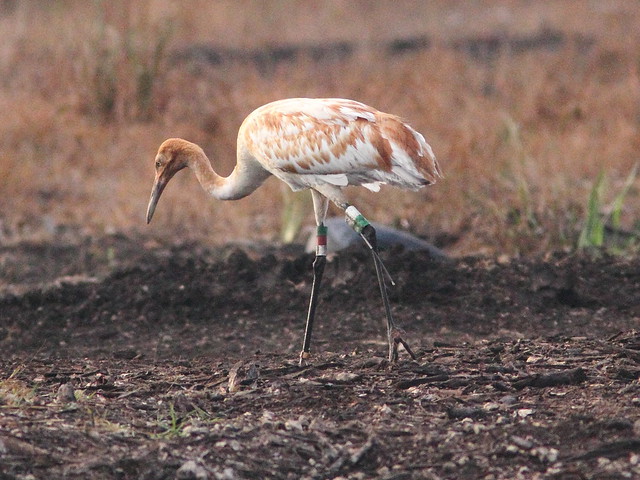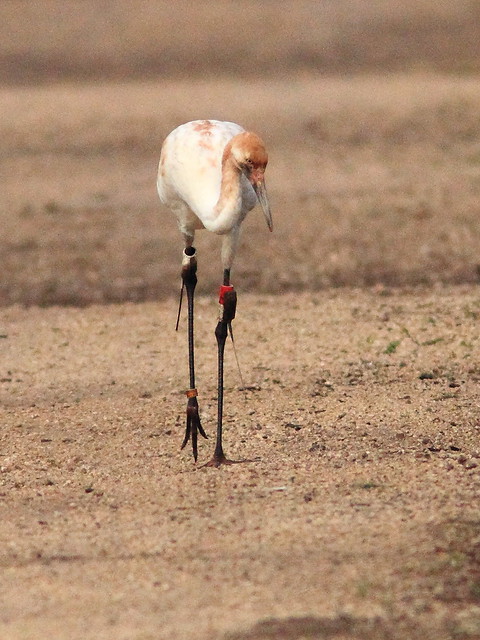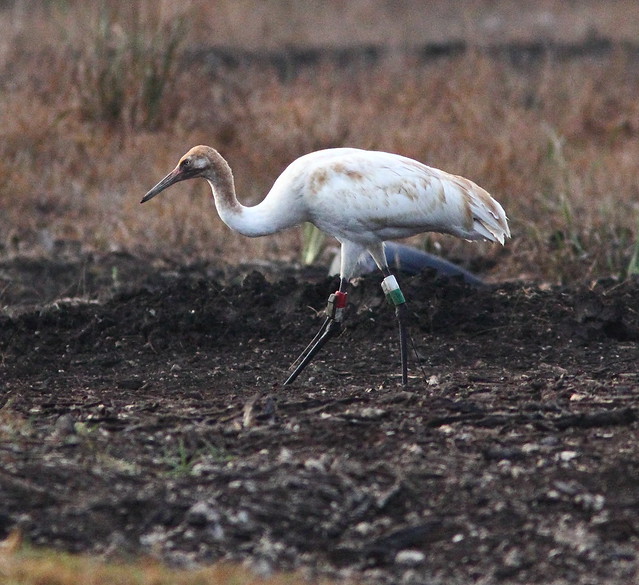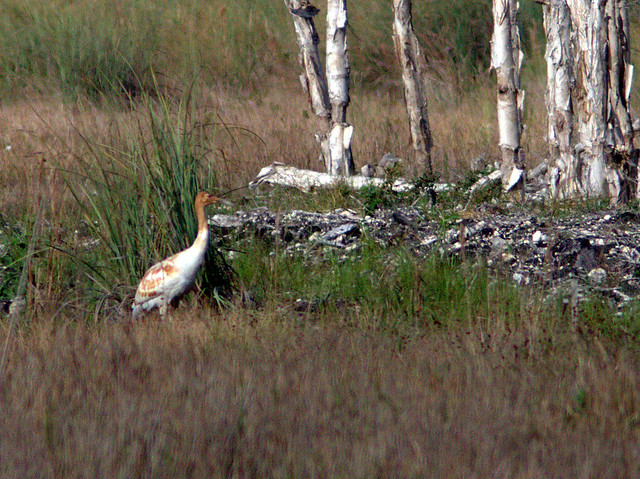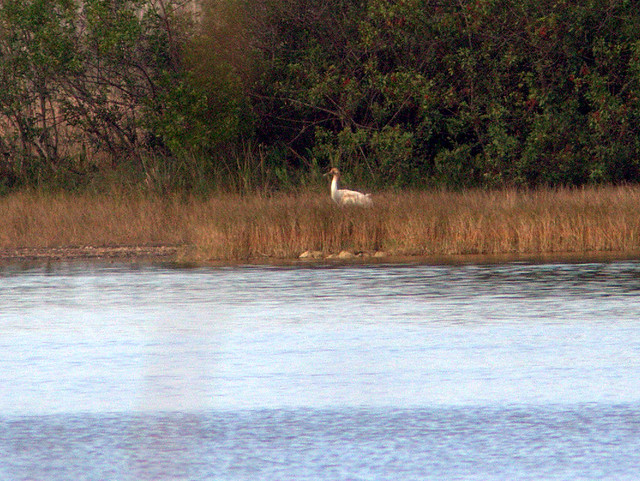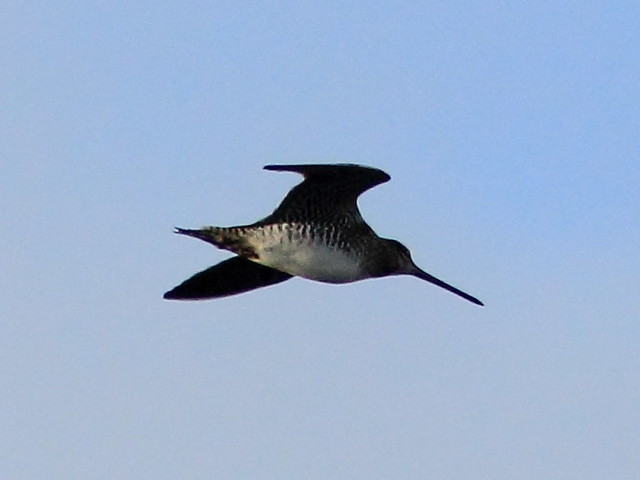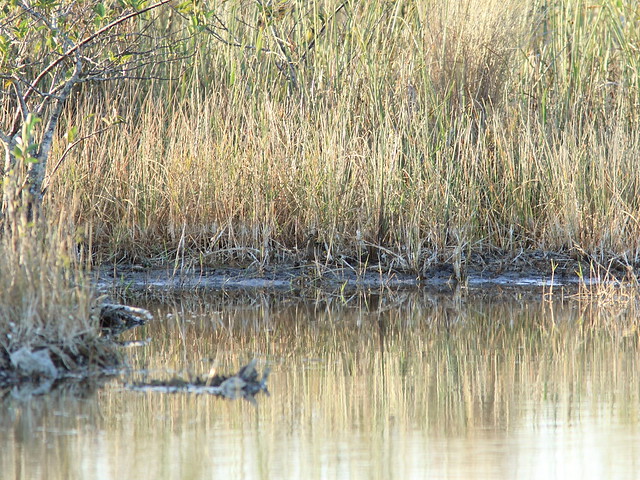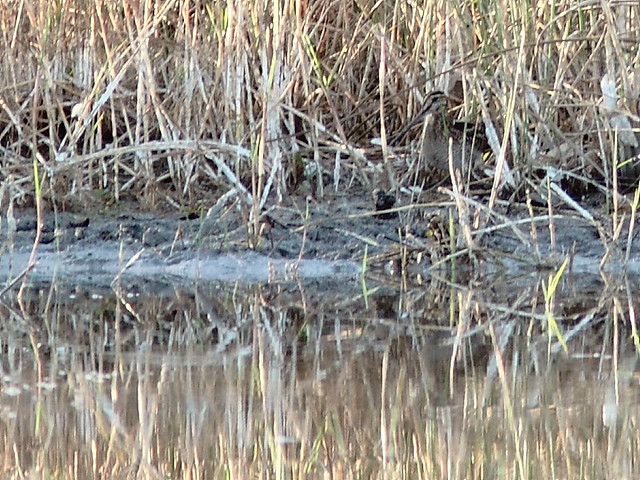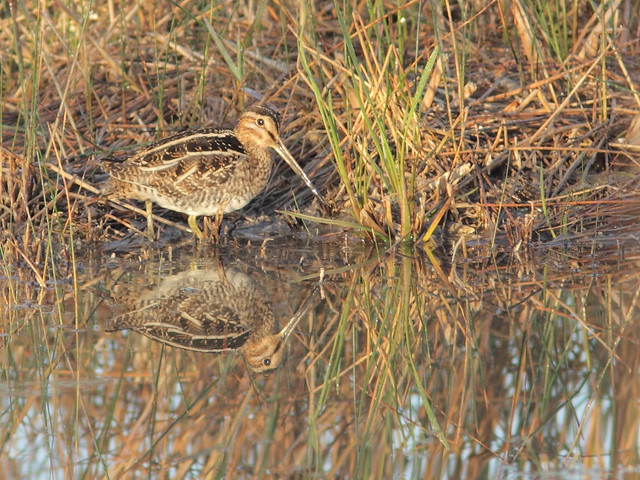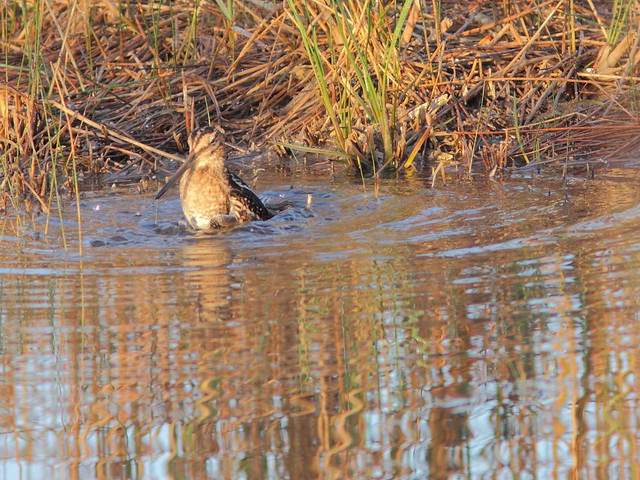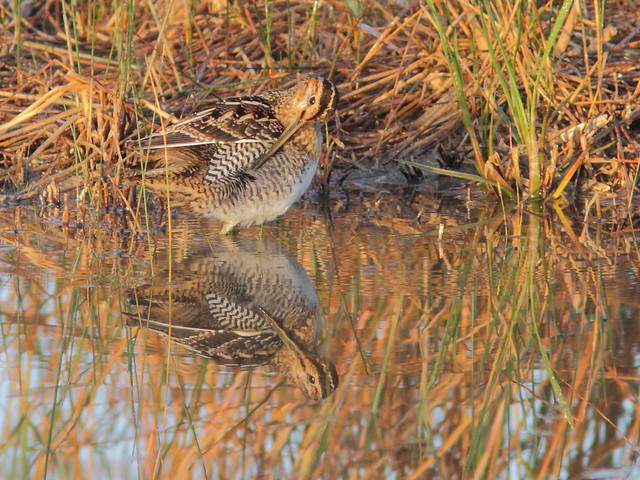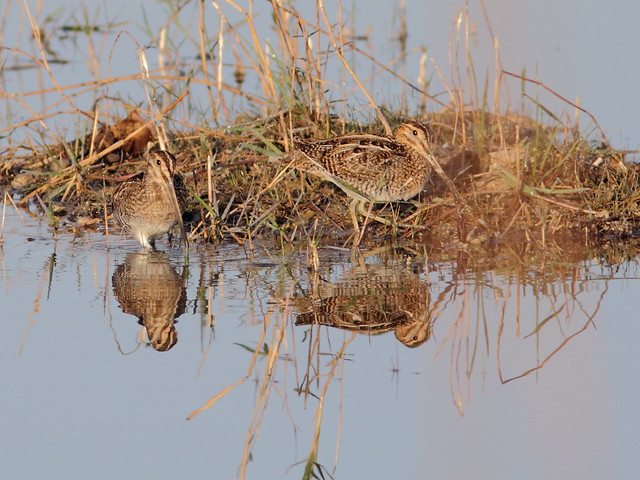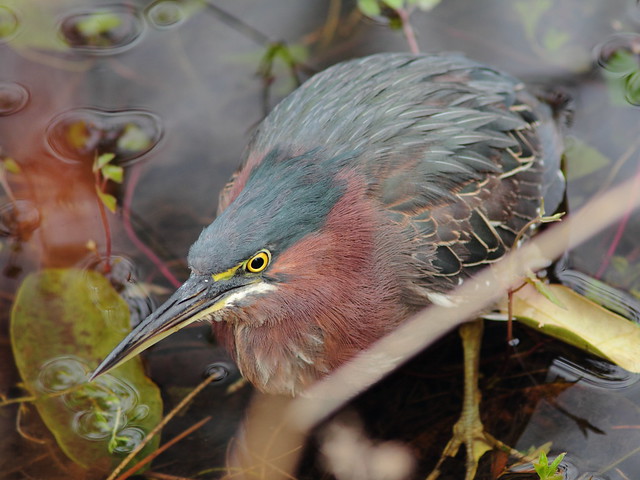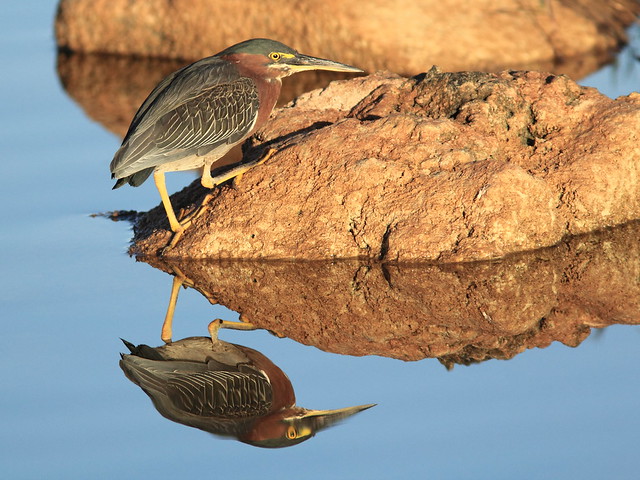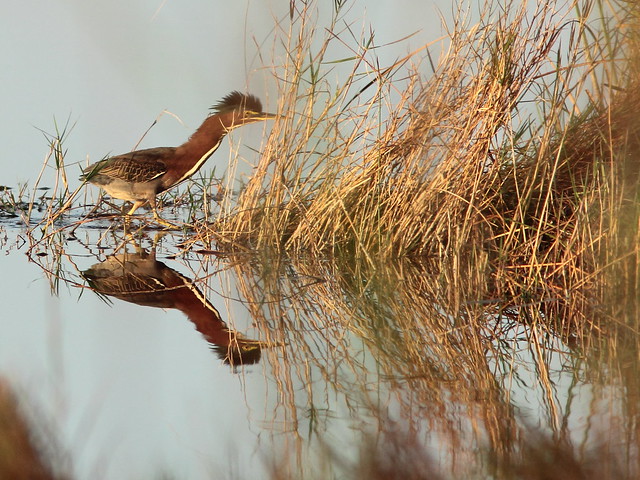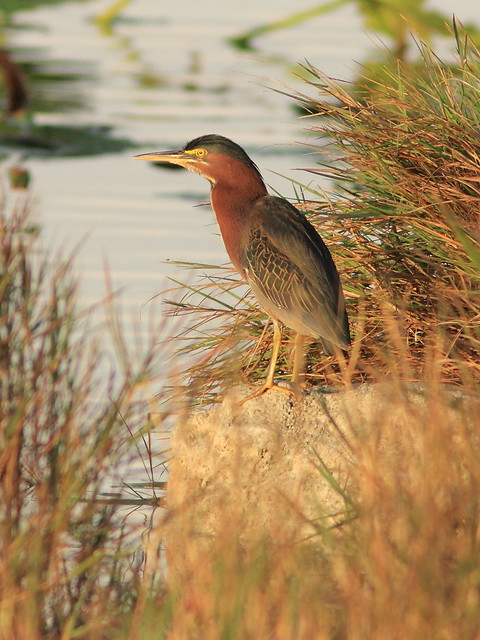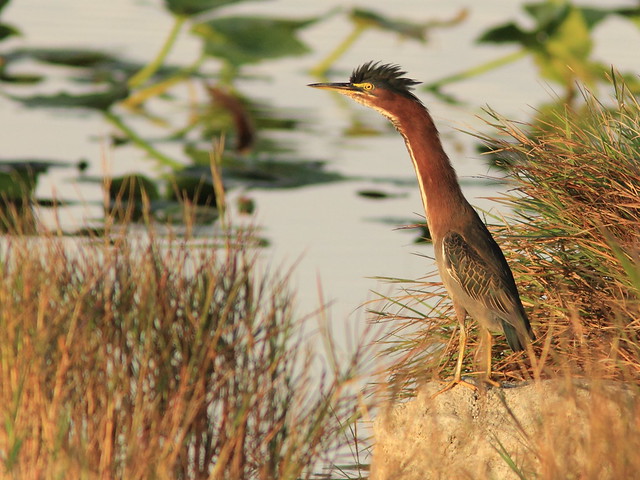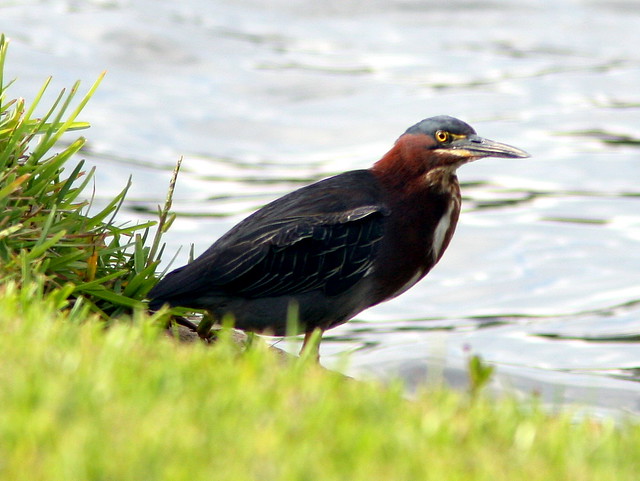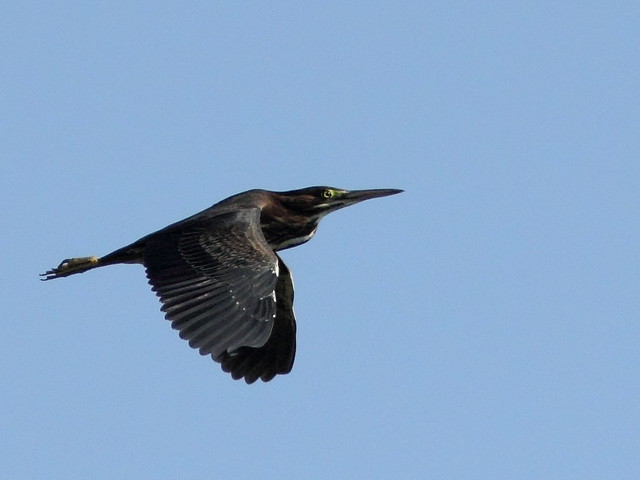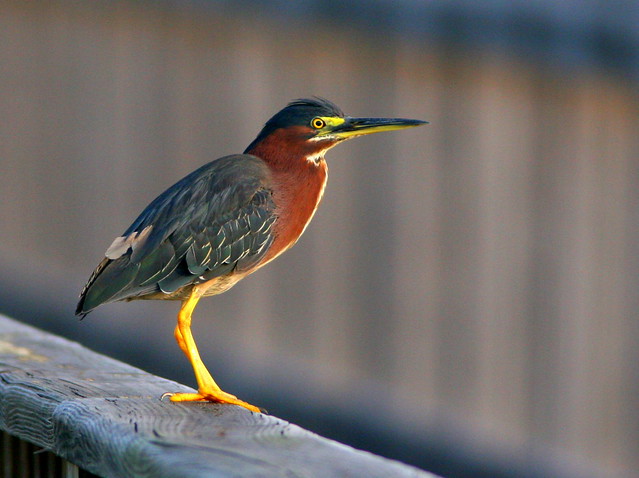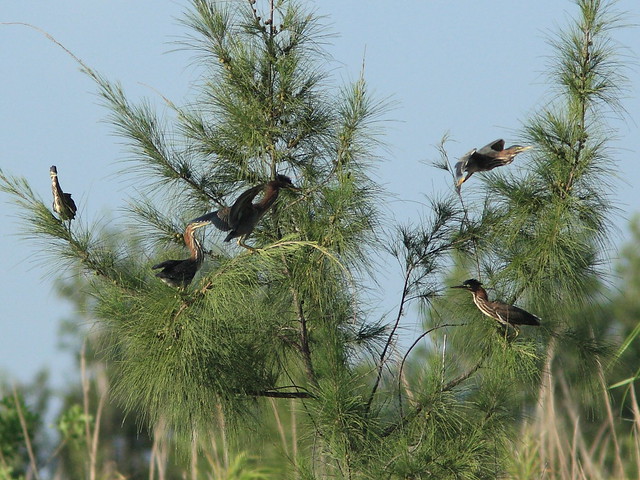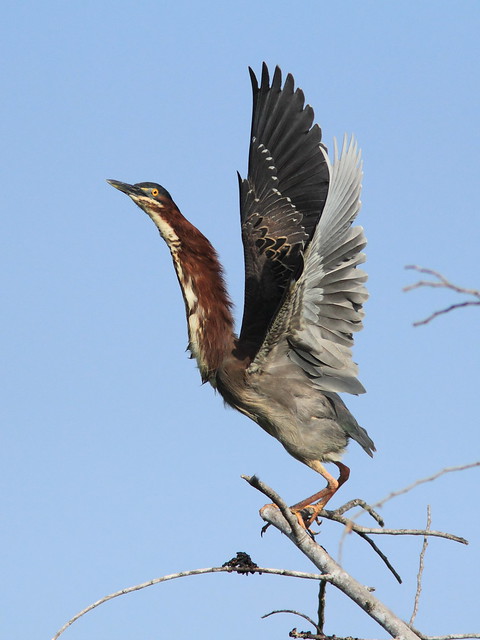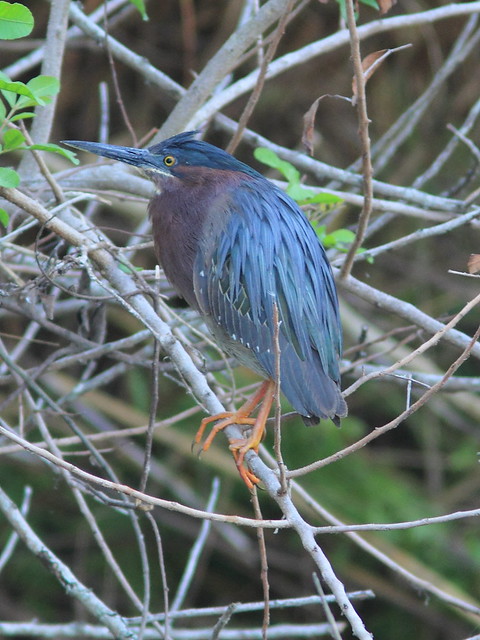Since our daughter and son-in-law's injuries were obviously unplanned they left tasks undone upstairs, and needed help when they suddenly realized that an essential item remained on the second floor. They have retained their good humor and we have not found it difficult to be with them 24/7. Her husband was injured in early November and yesterday the doctor removed his cast and said he has finally healed enough from the surgery to advance to a walker. Today he took his first shower in almost 3 months! Our daughter still has a month of non-weight bearing but can move around in a wheelchair and walker. We sleep in a bedroom upstairs, only a cell phone call away, but their only nighttime calls for assistance have been for us to let the dogs out.
The first week I did get away for about an hour after dropping the kids off at school. Seeking Snow Buntings, pipits and longspurs, I rode around several large cornfields. They were either plowed under or in stubble, well picked over by Canada Geese. Although I did not see my target birds, I was pleased to find a rather large flock of American Tree Sparrows foraging for left-over kernels.
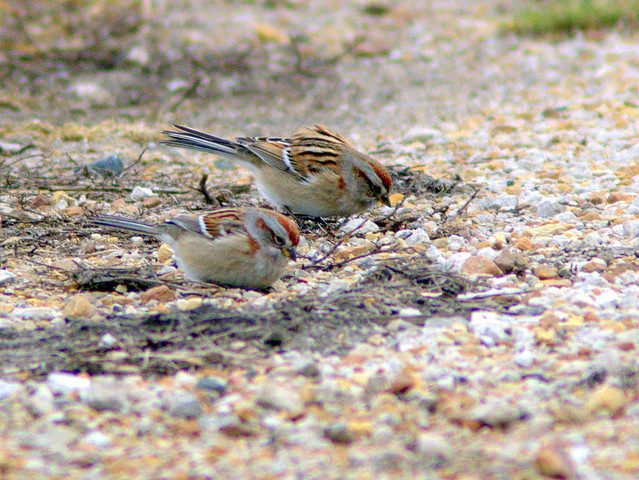
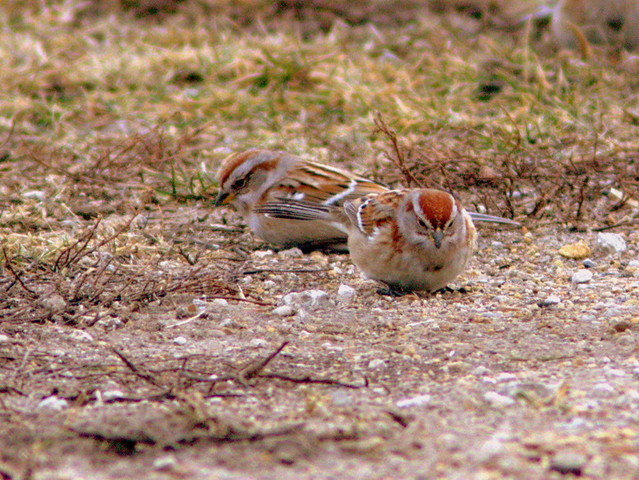
On my way back I saw a Red-tailed Hawk roosting atop a telephone pole. As I pressed the shutter it launched into flight.
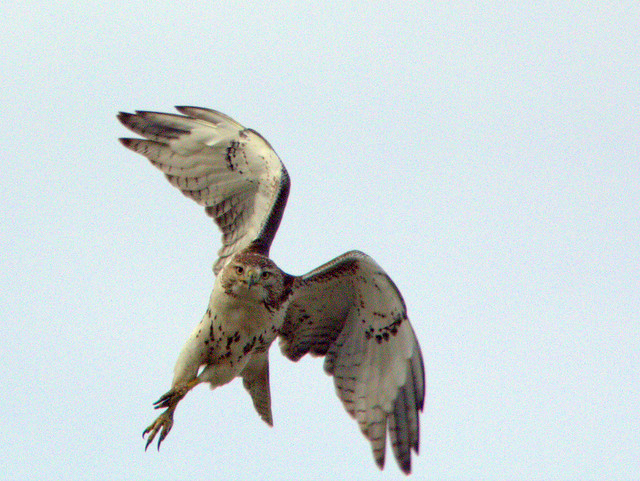
Our older granddaughter is quite knowledgeable about birds. She kept asking to go on a bird walk, but our other duties interfered. One afternoon Mary Lou and I took the girls directly from school to a local park. It was bitter cold but instead of hiking they enjoyed playing on the swings and slides while I explored the adjacent thickets. Mary Lou retreated to the warmth of the car, from which she could watch them at play.
I found a Dark-eyed Junco that had plumage characteristic of the more western Oregon subspecies-- dark head sharply contrasting with a brown back and light underparts.

The highlight of our outing with the children is best described in the words of the 8 year old, who typed this comment under my photo that was posted in FLICKR. She did this all herself and only got help from her mom to spell "surprisingly."
When we were coming home from Jones Meadow Park we found a Red-tail on a wire. Gramps pulled over and got his camera from the trunk. He took more pictures till he got so close he had to turn his camera sideways! Then came the flash. Surprisingly, the Red-tail didn't fly away! My grandma and sister suggested that it might fly around him and bite his butt! After what seemed like a million years, he came back. We told him what we were talking about. All he said was,''I got some really good shots''.

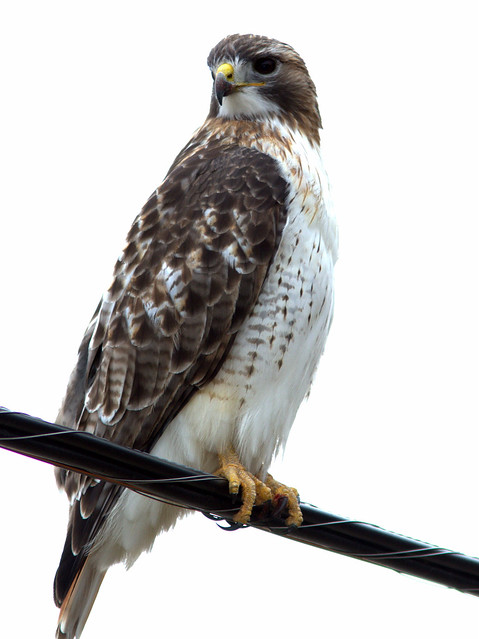

We have been kept busy transporting the girls to and from school and other events, running errands and taking the patients for medical appointments. In between there has been relatively little computer face time and even less time to get outdoors. My "bird hikes" consist mostly of walking out to fill the backyard bird feeder. The girls are alert to point out avian visitors, especially the colorful kind.
I try to get outside and shoot from the back deck, but many of my photos are fuzzy as they were taken through the kitchen window.
House Sparrows are the most common visitors. We do not have any in our Florida back yard, so they are a treat to see.

The Dark-eyed Junco migrates in from the north but rarely wanders into southern Florida. This is a male of the Slate-colored subspecies.
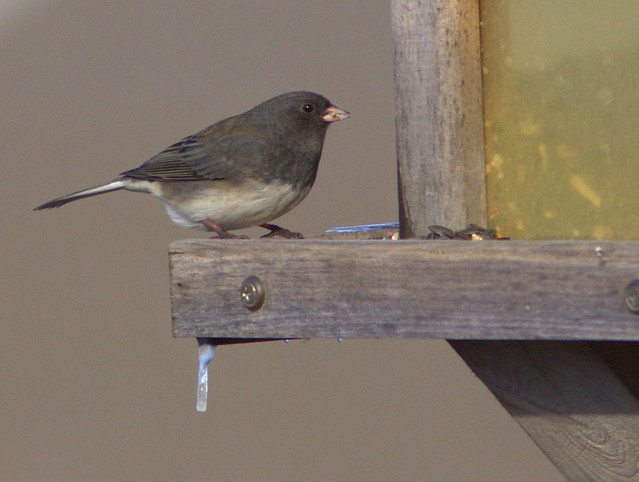
The female junco exhibits more brown in her plumage.
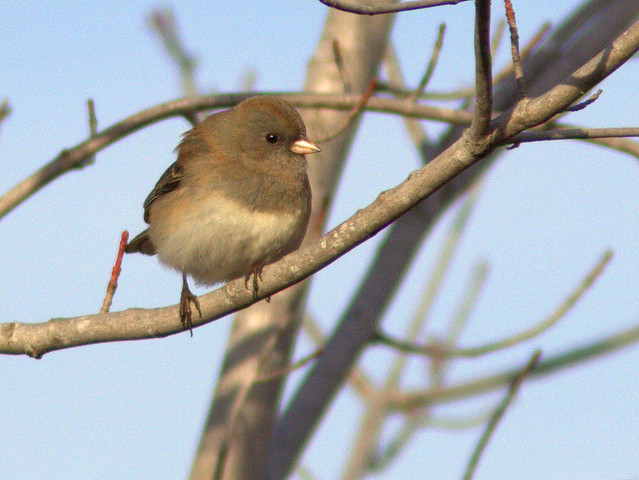
House Finches are fairly common.

Favored subject are the Northern Cardinals.
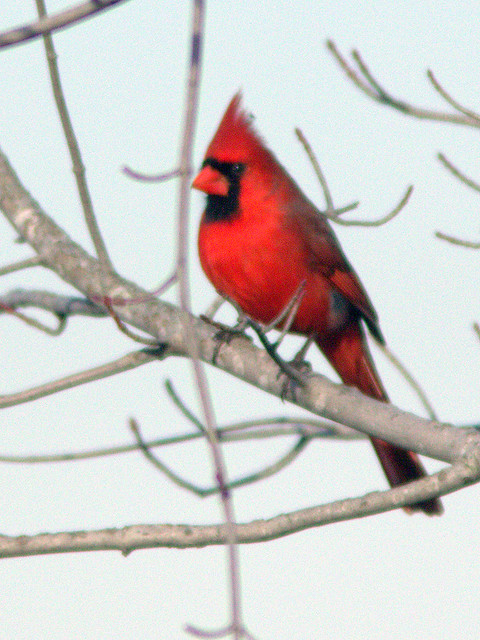
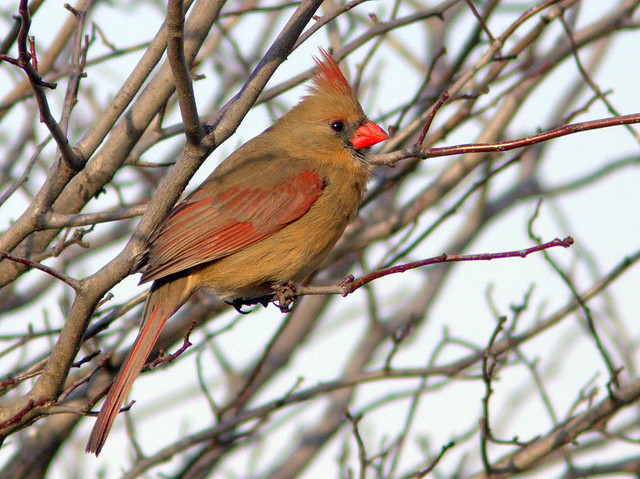
Their back yard blends into a small prairie preserve, about 10 acres in size. It is patrolled regularly by a Northern Harrier. Usually by the time the children see it flying back and forth and I run for my camera it is too late for a photo. On my first attempt it was 10 degrees (F) or -12.2 (C). The harrier had landed just outside their back fence and posed nicely. I crept out into the cold for great views, but my camera lens quickly fogged up and my wonderful photo op was a disaster. Within a few seconds the glass was almost opaque.
Our granddaughters could not wait to see the images on the screen of my laptop. They were horrible, but the girls helped me crop and edit them with Picasa. To my surprise, the the fog imparted a pleasant softness to the images of the harrier, making them look almost like watercolors.


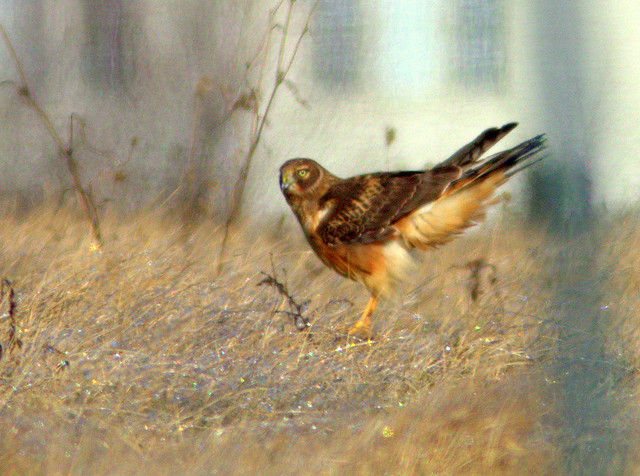

Heading back to Florida for a while-- look forward to the 72-85 degree temperature spread.
Here is the Illinois kitchen thermometer this week:

